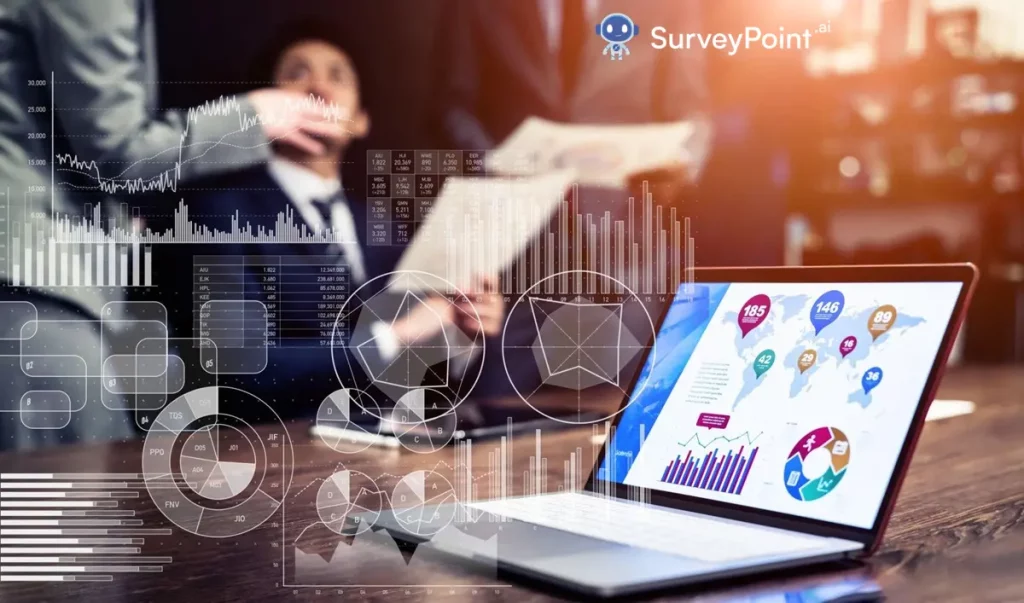
Unlock the secrets of data analysis costs with our comprehensive 4-step guide. Dive into the world of insights painlessly. Data Analysis Costs awaits your exploration!
Embarking on a data analysis journey? Navigating costs can be complex. Fear not! This guide demystifies the intricacies, offering a painless 4-step roadmap to illuminate your path. Let’s delve into the realm of insightful discoveries.
Unraveling the intricate web of data analysis costs demands a structured approach. Let’s break it down into four key steps, ensuring your journey is not only informative but also devoid of headaches.
Understanding the Cost Beast:
Before we tame this cost beast, let’s peek under its scales. Data analysis costs are influenced by several factors, kind of like that delicious cake depending on flour, eggs, and, well, maybe not plutonium (unless you’re baking for Dr. Evil). Here are the main ingredients:
- Complexity of your data: Think tangled spaghetti vs. neatly organized sushi. Messier data requires more cleaning and wrangling, which translates to more time and, you guessed it, more moolah.
- Scope of the analysis: Are you looking for a quick snack of insights or a five-course data feast? More in-depth analyses with advanced techniques like machine learning naturally cost more.
- Tools and resources: Think of these as your fancy kitchen gadgets. Specialized software and skilled analysts come with a price tag, but can also significantly streamline the process and boost efficiency.
- Timeline: Need it yesterday? Express data analysis comes with an express price tag. Setting realistic deadlines can help manage costs.
Understanding the Basics
Begin your odyssey by grasping the fundamental elements of data analysis costs. From software expenses to human resources, each component plays a vital role. Navigate through this section for a solid foundation.
Data Analysis Costs: Analyzing Core Expenses
Explore the core expenses associated with data analysis. Uncover the nuances of software costs, subscription fees, and licensing expenses. Understanding these intricacies sets the stage for an insightful journey.
Unveiling Hidden Charges
Beyond the obvious lies a realm of hidden charges. This section sheds light on the covert expenses often overlooked. Prepare to be equipped with the knowledge to navigate the maze of unexpected costs.
Crafting a Budget-Friendly Strategy
Armed with insights from the basics, formulate a budget-friendly strategy. Navigate through this section to discover practical tips, cost-cutting techniques, and strategic planning that ensures efficiency without breaking the bank.
Optimizing Resource Allocation
Efficiently allocate resources to minimize costs. Learn how to optimize human resources, streamline workflows, and enhance productivity without compromising the quality of insights.
Leveraging Open-Source Solutions
Explore the world of open-source solutions. Discover how incorporating these tools can significantly reduce software costs while maintaining the integrity of your data analysis process.
With a solid foundation and a budget-friendly strategy in place, let’s delve deeper into the intricacies of data analysis costs.
Navigating Vendor Relationships
Vendor relationships can make or break your budget. This section offers insights into establishing mutually beneficial partnerships and negotiating favorable terms.
Negotiating Vendor Contracts
Master the art of negotiating vendor contracts. From pricing structures to service level agreements, this subsection provides a comprehensive guide to ensure you get the best value for your investment.
Evaluating Long-Term Partnerships
Dive into the importance of long-term partnerships. Learn how fostering relationships with vendors can lead to cost reductions, exclusive deals, and enhanced support for your data analysis endeavors.
Data Analysis CostsFuture-Proofing Your Investment
Data analysis is an ever-evolving landscape. Safeguard your investment by future-proofing your strategies. This section equips you with the knowledge to adapt to technological advancements and industry changes.
Adapting to Technological Shifts

Stay ahead by adapting to technological shifts. Understand the importance of staying abreast of industry trends and integrating emerging technologies to future-proof your data analysis investments.
Embracing Scalable Solutions
Explore the scalability of your solutions. This subsection provides insights into selecting tools and platforms that can grow with your business, ensuring a sustainable and cost-effective approach.
You Must Read 7 Seamless Integration Strategies with Talend for Data Import: Say Goodbye to Data Silos! Dive Deeper with Data Scientist vs Data Analyst vs Data Engineer in 2024 The Ultimate Production Operation Analysis Toolkit: 5 Key Strategies for Success
FAQs on Data Analysis Costs
Q1: Why is data analysis important for businesses?
Data analysis enables businesses to derive meaningful insights from their data, facilitating informed decision-making and strategic planning.
Q2: How can I optimize data analysis costs?
Optimize costs by carefully selecting tools, ensuring data quality, and regularly assessing the efficiency of your analysis processes.
Q3: What role does burstiness play in data analysis?
Burstiness, or irregular data patterns, often leads to innovative insights by uncovering unexpected trends or anomalies.
Q4: How do I strike a balance between specificity and context in data analysis?
Maintain a balance by providing detailed insights while always connecting your analysis to the broader context of your business goals.
Q5: Where can I learn more about cost-effective data analysis strategies?
Explore online resources, attend workshops, and engage with industry experts to stay updated on the latest cost-effective data analysis strategies.
Q6: How do I calculate the total cost of data analysis?
Calculating the total cost of data analysis involves meticulous consideration of software, human resources, and infrastructure expenses. Begin by listing software tools and quantifying associated costs like licensing fees. Evaluate human resource expenses, including salaries and training. Don’t forget infrastructure costs such as hardware or cloud services. Factor in hidden charges and regularly review and adjust for any changes in subscriptions or requirements. This comprehensive approach ensures a transparent and accurate assessment of the total cost of data analysis.
Q7: What strategies can I employ to optimize human resources for data analysis?
To optimize human resources, focus on training programs to enhance skills, delegate tasks efficiently, and encourage a collaborative work environment. Additionally, consider outsourcing specific tasks to experts when necessary.
Q8: How can I negotiate favorable terms in vendor contracts for data analysis tools?
Negotiating vendor contracts involves thorough research on pricing models, understanding your usage needs, and being prepared to walk away if terms are unfavorable. Establish a partnership mentality, emphasizing long-term collaboration for mutual benefit.
Q9: Is it worth investing in emerging technologies for data analysis?
Investing in emerging technologies can provide a competitive edge and future-proof your data analysis efforts. Evaluate the potential benefits, such as improved efficiency and insights, and assess the scalability and compatibility of these technologies with your current infrastructure.
Q10: How do I ensure scalability in my data analysis solutions?
To ensure scalability, choose tools and platforms that can seamlessly grow with your business. Prioritize cloud-based solutions, assess their scalability features, and plan for potential increases in data volume and analytical complexity.
Q11: Can I apply these cost-saving strategies to small businesses?
Absolutely! The principles outlined in this guide are applicable to businesses of all sizes. Small businesses, in particular, can benefit significantly from cost optimization, efficient resource allocation, and strategic vendor relationships.
Conclusion
In the realm of data analysis, mastering the art of managing costs is pivotal for success. This comprehensive 4-step guide to demystifying data analysis costs has equipped you with the knowledge and strategies needed for a painless journey.
Remember, understanding the basics, crafting a budget-friendly strategy, navigating vendor relationships, and future-proofing your investment are the cornerstones of effective cost management in data analysis.
Implement these insights, stay informed about industry trends, and embrace a proactive approach to cost optimization. As you navigate the ever-evolving landscape of data analysis, may your journey be not only insightful but also cost-effective.

